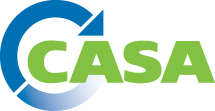Senate Committee Discusses CERCLA Liability Exemption for Water Sector
On September 7, the Senate Committee on Environment and Public Works held a hearing entitled, “Implementing IIJA: Perspectives on Drinking Water and Wastewater Infrastructure Act, Part II.” The purpose was to hear from nonfederal stakeholders about the implementation of the law’s water sector investments and what improvements can be made to the process. However, the hearing’s discussion focused mainly on the existing policy and funding problems within the water and wastewater sectors, rather than reviewing implementation status. This included discussion on the threat PFAS poses to the affordability of water treatment operations and management of biosolids, the need for CERCLA liability exemption for the water sectors if PFAS is designated as a hazardous substance and the issue of water affordability, and the need for a permanent Low-Income Household Water Assistance Program (LIHWAP).
At the start of the hearing, Ranking Member Shelley Moore Capito (R-WV) noted the complicated issue of PFAS for the water sector. She stressed the need for CERCLA liability exemption for the water and wastewater sectors, which are a passive receivers of the chemicals, and noted that an exemption honors CERCLA’s polluter pays principle.
During the hearing, Senators questioned witnesses on what they see as the risks to water and wastewater utilities when it comes to PFAS contamination without a liability exemption under CERCLA and water affordability issues for communities. Responding to questions from Republican Senators on the need for the water sector to be provided CERCLA liability exemption, Eric Volk, Executive Director for the North Dakota Rural Water Systems Association, explained that there are many unknowns about the extent of the problem and as well as how do utilities dispose of the contamination if current disposal options are not allowed. He cautioned that if ratepayers are to bear the increased costs of disposing of the material, it will be unsustainable. He stressed that a CERCLA liability exemption is critical to avoid these outcomes. Meanwhile Elizabeth Biser, Secretary for the North Carolina Department of Environmental Quality, explained that PFAS operates differently from other emerging contaminants and that the ratepayers would bear the costs. She noted that ratepayers already pay for treatment costs of their public utilities and therefore “would be on the hook twice.” Senator Alex Padilla (D-CA) did not speak to PFAS directly during the hearing, but he did make a statement that he aligns himself with the hearing’s discussion on the subject.
Responding to committee member questions on affordability, Kishia L. Powell, General Manager & CEO, Washington Suburban Sanitary Commission (WSSC Water) stated that the LIHWAP pilot program has been incredibly helpful. She explained that WSSC relies on rates to continue to fund its operations and investments and if the rates do not match the investment needs WSSC would need to raise rates. She stressed this is an unsustainable solution and suggested making LIHWAP a permanent program.
Chairman Tom Carper (D-DE) closed the hearing without stating any specific next steps the committee will take. However, the hearing occurs as the committee staff continue work on the Draft PFAS Proposal legislative package.
Bureau of Reclamation Announces New Water Recycling Funding Program
 Last week, the U.S. Bureau of Reclamation has announced a Notice of Funding Opportunity (NOFO) for WaterSMART Large-Scale Water Recycling Projects. This new program, created by the Bipartisan Infrastructure Law, is part of the overall effort by the Administration to respond to the increasing frequency and severity of drought conditions and the adverse impact the conditions are having on reliable water supplies. Upon the announcement, Commissioner Camille Touton stated that “as we work to address the drought crisis, its critical we are advancing innovative, forward-looking solutions that help communities develop local, drought resistant water supplies.”
Last week, the U.S. Bureau of Reclamation has announced a Notice of Funding Opportunity (NOFO) for WaterSMART Large-Scale Water Recycling Projects. This new program, created by the Bipartisan Infrastructure Law, is part of the overall effort by the Administration to respond to the increasing frequency and severity of drought conditions and the adverse impact the conditions are having on reliable water supplies. Upon the announcement, Commissioner Camille Touton stated that “as we work to address the drought crisis, its critical we are advancing innovative, forward-looking solutions that help communities develop local, drought resistant water supplies.”
This NOFO has a rolling application period, starting with the first period being on November 21, 2023, and last period on September 30, 2024. Specific information on the NOFO can be found on Grants.gov website by searching “R23AS00433.” The following summaries key topline information.
- $180 million in this first tranche ($450m over five years) for projects that have a total project cost of at least $500,000,000, at 25% Federal cost share.
- Funding may be requested for planning, design, and construction of
- Rolling application period, the first is November 21, 2023, and the last is September 30, 2024.
All applicants under this NOFO are required to submit a Feasibility Study to Reclamation.




 @CASA_CleanWater
@CASA_CleanWater